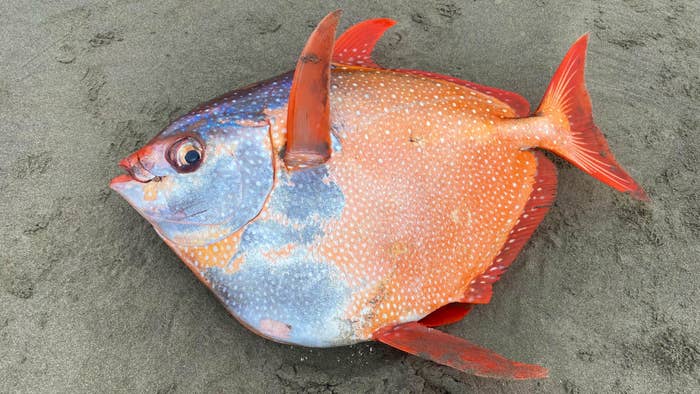
Officials at the Seaside Aquarium in Oregon responded to a call last week regarding the discovery of a massive opah fish, or moonfish, that had recently washed ashore, the Washington Postreports.
Measuring at three and a half feet long and about 100 pounds, the opah was found on Sunset Beach in the city of Seaside. The moonfish’s appearance on the Oregon coast has left National Oceanic and Atmospheric Administration officials somewhat confused since the fish can typically be found in tropical and temperate waters, according to the NOAA.
“I wouldn’t expect an opah that size to normally be off Oregon,” Heidi Dewar, research biologist for NOAA Fisheries, told the Post, adding that since some have been known to be near the California coast, it’s “certainly in close proximity to Oregon, so it’s not super surprising.”
While further studies will be needed to determine why exactly this particular fish was left stranded, Dewar suspects that climate change could play a part. “We are seeing some marine organisms moving northward as ocean temperatures increase,” Dewar said. Keith Chandler, general manager of Seaside Aquarium, told CNN the fish had probably been on the beach for less than an hour before they were notified.
The opah will now be used to learn more about the little-known species. A 2015 paper published by NOAA researchers identified the moonfish, which can grow to more than six feet long and over 600 pounds, as the only known fully warm-blooded fish. The moonfish will be dissected later this year by students, as it’s a specimen they “may never come across again in their day-to-day lives.”
Researchers hope to learn more about the opah’s foraging habits by looking inside its stomach, while investigating its tissue could reveal where it lives and what it eats. The aquarium also wants to try and keep its skeleton intact to put on display.

